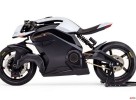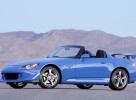I slowly approached the bright yellow 2016 Lamborghini Aventador LP 750-4 Superveloce parked in the paddock of the Circuit de Catalunya outside Barcelona, Spain, and caressed its massive rear wing with my fingertips. I touched the carbon fiber expanse with the sort of tenderness one might pet a wild tiger, and—as if fearing it might bite off my hand— studied the massive supercar’s lines.
By any measure, the ‘standard’ (and I use that term lightly) Aventador coupe and roadster are intimidating to behold, with hard lines and gaping intakes often offset by bright paint schemes. The Superveloce (SV), which, roughly translated, means ‘super-fast,’ is something altogether more imposing. Lamborghini designers enhanced the lines and looks of the Aventador not simply to intimidate, but also to improve aerodynamics and performance.
My first view of the hulking, Italian wedge of carbon fiber and fury was of its rear end, with its new, large rear diffuser topped with a massive rear wing. The back end now has extra exposed carbon elements, accentuated further by four naked exhaust pipes and several vertical rear fins that route air off the underbody and into the slip stream. Closer to the cabin, a mesh structure dissipates heat generated by the 6.5-liter V-12 engine, fed by fixed cooling ducts above the rear wheels. Up front, the story is much the same: the nose, like the rear, is sharper and sleeker. A more open design conjures images of an open-mouthed megalodon ready to strike and improves airflow across the brakes while pushing the car down into the pavement for quicker handling.
In short, the looks of the Aventador SV could terrify even primordial fish that thrive in deep-sea inky blackness, all for the sake of performance and aerodynamics.
Facts and Figures
If the looks of the Aventador SV don’t impress, the specs ought to do the trick. Not only is the SV more slippery through the wind than Aventadors past, it’s also faster and more powerful. The sprint to 62 mph is surpassed in 2.8 seconds, and the SV tops out at a long-legged 217 mph (or higher), making it the fastest series-production Lamborghini.
The improved acceleration is thanks to a V-12 engine that produces 750 horsepower and 507 pound-feet of torque—50 more ponies than the quotidian Aventador. All of that torquey goodness is routed to all four wheels by way of a super-quick 7-speed single-clutch automated manual transmission. Curb weight is down 110 pounds to 3,362 lbs, good for a power-to-weight ratio of 4.4 pounds per horsepower.
De Catalunya
Facts and figures about a supercar are virtually meaningless without the opportunity to test them. Roaring out onto the tarmac where the Formula 1 Spanish Grand Prix was held weeks earlier, I felt a great deal of trepidation. Lamborghini’s handlers, just before they sent us out on track, warned that the blisteringly fast SV had tons of grip. They made sure to add that, although it was very fast, once it exceeded its limits, it could go off the track even faster.
For the first few corners, I babied it a bit, not wanting to send the SV sailing off into a tire wall and myself to an early grave. Quickly, though, I was seduced by the SV’s savage acceleration and visceral exhaust note. Just a few laps in, I found myself hot on the tail of another journalist, four-wheel drifting our cars through the famous Renault corner, a sweeping right-hander, to keep up with the lead race car driver. The white SV ahead pelted my car with chunks of Pirelli PO Corsa tires, like a rally car kicking up gravel, leaving rubbery battle scars across the hood.
Thankfully, the SV’s braking abilities are even more astonishing than its acceleration. What’s astonishing about the carbon-ceramic brakes isn’t the force with which they slow the car, but their ability to repeat the performance ceaselessly. One 160-mph lap after the next, I’d get the SV up to speed on the front straight before slamming it back down to around 60 mph before the first corner, replicating similar hard braking maneuvers without fuss or fade. Looking back at it, slow-motion memories linger.
Equally enviable are the improved suspension and steering systems. For the first time in the Aventador, Lamborghini has added its dynamic steering system, which adapts the steering ratio to the road speed. Revised, magnetic dampers upgrade the Aventador SV’s ride to “cloud-like,” which is surprising, given its brutal nature.
Of all the things that I love about the SV—and there are many—perhaps my favorite is the sensation of changing gears. There’s really no sensation like turning the dial to Corsa, stomping on the accelerator, and feeling a punch of raw, unbridled acceleration, backed by the sounds of the symphonic V-12 exhaust note. Shifts are free of drama in Strada and Sport drive modes.
Worth It
What will this thing cost you? Approximately $493,095. Lamborghini will only build 600 examples of the Aventador SV, around 200 of which are allocated to the U.S. market, which makes it pretty darn rare. Moreover, the Aventador SV is only the fourth model ever to wear the Superveloce badge.
In spite of its rarity and performance, I’m sure most people would look at a car like the Aventador SV and presume that such a thing couldn’t possibly be worth half a million dollars. In many instances, I’d agree with them. This time, I can’t. The Aventador SV is more than just sinister looks and a loud exhaust note with world-class driving performance and scissor doors. It’s all of those things combined, backed by a brand as enviable as any on the planet.
Most Aventador SVs, as the chariot of choice for pop stars and sheiks, will probably be relegated to slowly cruising through downtown Beverly Hills or collecting dust in a garage in Abu Dhabi. You don’t need an experience like racing on Catalunya to understand why the Aventador SV is more than a showpiece, but it should be a mandatory part of the ownership experience.
By the numbers: 2016 Lamborghini Aventador LP 750-4 Superveloce
MSRP: $493,095 (includes $3495 destination charge and $3700 gas guzzler tax)
Power and drive wheels: 6.5-liter, 750-hp V-12 engine, all-wheel drive
Transmission: 7-speed automated manual transmission
EPA fuel economy: Not rated
In showrooms: Get your order in now
See Now: OnePlus 6: How Different Will It Be From OnePlus 5?



























